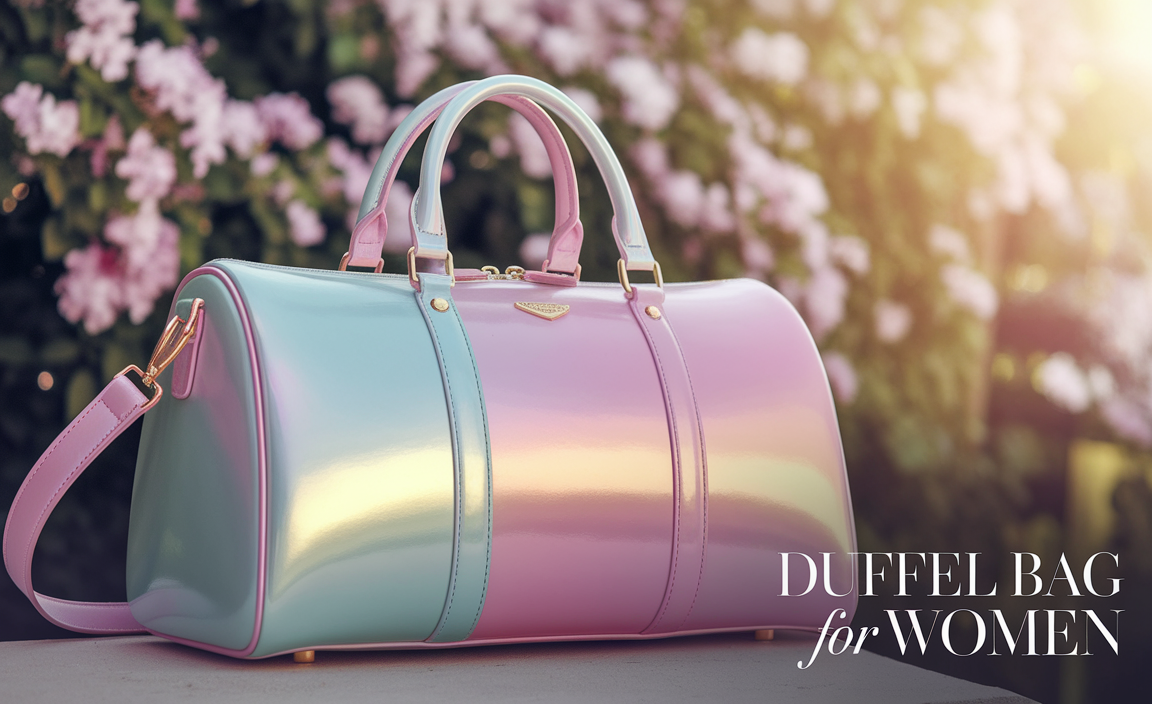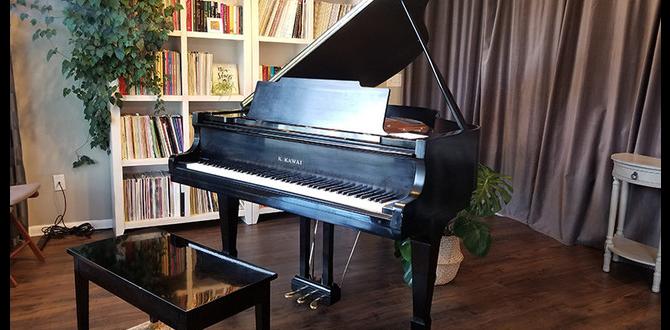For fecal incontinence, the best protection comes from choosing adult diapers specifically designed for high absorbency and leak protection. Look for products with strong odor control, a comfortable fit, and materials that are gentle on the skin to ensure confidence and dignity throughout the day.
Navigating the world of adult diapers for fecal incontinence might seem overwhelming at first. It’s a common concern that affects many, and finding the right solution can significantly improve your comfort and confidence. You want to feel secure, regardless of your daily activities, whether it’s a quiet day at home or a long journey. We understand that feeling protected is key to living your life fully. This guide is here to break down exactly what to look for and how to choose the best adult diapers for your specific needs, ensuring you can move through your day with ease and peace of mind.
Understanding Fecal Incontinence and Diaper Needs
Fecal incontinence, also known as bowel incontinence, is the inability to control bowel movements, leading to an unexpected leakage of stool. This condition can stem from various causes, including muscle damage, nerve damage, chronic constipation, or inflammatory bowel disease. For those experiencing it, the primary concern is often leakage and odor, which can impact daily life and confidence.
When selecting adult diapers for fecal incontinence, it’s crucial to focus on products engineered for maximum protection against both moisture and odor. Unlike diapers designed for urinary incontinence, those for fecal incontinence typically offer:
Superior absorbency: To quickly lock away even large volumes of stool.
Enhanced leak guards: Stronger leg cuffs and a snugger fit to prevent any escape.
Odor control technology: Special materials and designs to neutralize or trap odors.
Comfort and discretion: Breathable fabrics and a design that fits well under clothing.
Finding the right product isn’t just about absorbency; it’s about restoring a sense of normalcy and freedom.
Key Features to Look for in Adult Diapers for Fecal Incontinence
Choosing the right adult diaper involves looking beyond just the basic need for containment. Several features contribute to superior protection, comfort, and dignity.
Absorbency Level
This is paramount. For fecal incontinence, you’ll generally need products rated for heavy to maximum absorbency. These diapers are designed to handle sudden and significant losses more effectively than lighter options. Look for terms like “maximum absorbency,” “overnight protection,” or specific absorbency ratings if provided by the manufacturer.
Fit and Coverage
A proper fit is essential to prevent leaks. Diapers come in various styles, primarily:
Briefs (Tab-Style Diapers): These are the most traditional and often offer the highest level of protection. They have refastenable tabs on the sides, allowing for a customized fit. They are excellent for fecal incontinence because they provide full coverage and secure containment.
Pull-On Underwear: These resemble regular underwear and are pulled on. While convenient for those with mobility, they may not offer the same level of leak protection for heavy fecal incontinence as tab-style briefs unless specifically reinforced.
Key Fit Considerations:
Waistband: A snug but comfortable waistband helps prevent material from shifting and creating gaps.
Leg Cuffs/Gathers: Look for strong, well-placed elastic leg cuffs that create a seal around the legs to catch leaks.
Coverage Area: Ensure the absorbent core is wide enough to cover the entire seating area where leaks are most likely to occur.
Leak Protection and Containment
Beyond absorbency, the physical barriers are vital. Features to seek include:
Standing Leg Gathers (Leak Guards): These are elastic barriers that stand up along the inner thigh to create a secondary barrier against leaks. They are especially important for containing looser stools.
Plastic Backsheet: While some prefer cloth-like backsheets for discretion, plastic backsheets often provide a superior barrier against leaks, especially for heavier soiling. However, more modern designs offer cloth-like feel with effective leak protection.
Odor Control
Odor can be a significant concern. Manufacturers incorporate various technologies:
Odor Neutralizers: These are chemicals integrated into the absorbent material that trap and neutralize odor molecules.
Breathable Materials: Allowing air to circulate can help reduce moisture buildup, which can contribute to odor.
Secure Fit: A good seal around the legs and waist prevents odors from escaping.
Material and Skin Health
Prolonged contact with moisture can lead to skin irritation, rashes, and pressure sores. Look for:
Breathable Materials: Allow air to circulate, keeping the skin drier and healthier.
Hypoallergenic Materials: If you have sensitive skin, choose diapers made without harsh chemicals, fragrances, or dyes.
Wetness Indicators: Lines that change color when the diaper is wet can help you know when a change is needed, promoting better skin care. You can learn more about maintaining skin health from resources like the National Institute on Aging, which offers general guidance pertinent to caregivers and individuals needing absorbent products. Preventing Bedsores (Note: While this link is about bedsores, the principles of keeping skin dry and clean are highly relevant to diaper use).
Types of Adult Diapers for Fecal Incontinence
Not all adult diapers are created equal, especially when it comes to managing fecal incontinence. The most effective options generally offer a higher level of containment and specialized features.
Tab-Style Briefs (Adult Diapers with Tabs)
These are often considered the gold standard for fecal incontinence due to their comprehensive coverage and secure fastening system.
Pros:
Maximum Containment: Full-coverage design with strong elastic leg cuffs and a wide absorbent core.
Customizable Fit: Adjustable tabs allow for a precise fit, which is crucial for preventing leaks.
High Absorbency: Typically manufactured with higher absorbency capacities suitable for heavy soiling.
Ease of Changing: Can be changed while lying down or standing, making them suitable for individuals with mobility issues.
Cons:
Bulkier: Can be more noticeable under clothing compared to other options.
Can be Noisier: Plastic-backed versions may produce rustling sounds.
Best for: Individuals who need the highest level of protection, those with moderate to severe fecal incontinence, and people who may need assistance with changes.
Overnight Diapers/Briefs
While the term “overnight” often implies extended wear for urinary leakage, many overnight briefs are also designed with enhanced features for fecal incontinence, such as thicker padding and superior leak barriers.
Pros:
Extended Protection: Designed to handle larger volumes and longer periods of time without leaks.
Superior Absorbency: Often have the highest absorbency ratings available.
Cons:
Can be Expensive: Due to higher absorbency and quality.
May be Overkill: For daytime use if leakage is not constant or extremely heavy.
Best for: Ensuring peace of mind during sleep or during long periods where changing may not be feasible.
Protective Underwear (Pull-Ups)
These are designed to be pulled on and off like regular underwear. While popular for urinary incontinence due to their discretion, they can be suitable for lighter forms of fecal incontinence or for individuals seeking more independence.
Pros:
Discreet: Look and feel more like regular underwear.
Easy to Use: Promotes independence for those who can manage changes themselves.
Cons:
Limited Containment: May not offer the same level of protection against heavy or sudden fecal releases as tab-style briefs.
Can be Messy to Change: If soiled, they need to be pulled down, which can be difficult or messy if mobility is limited.
Best for: Individuals with lighter fecal incontinence who value discretion and independence, or as a backup for light leakage.
Incontinence Pads and Liners
These are worn inside regular underwear and are typically designed for urinary leakage. While some very heavy-duty options might offer a little protection, they are generally not recommended as the primary solution for fecal incontinence due to the difficulty in containing solid waste effectively and the risk of leakage around the edges.
When to choose Tab-Style Briefs over Pull-Ups for Fecal Incontinence:
Severity of Incontinence: If you experience frequent, unpredictable, or large-volume losses, tab-style briefs offer superior containment.
Mobility: If you have difficulty standing or maneuvering for changes, tab-style briefs are easier to change while lying down.
Need for Secure Fit: The adjustable tabs ensure a snug, gap-free fit that is crucial for preventing leaks of stool.
Comparing Top Brands and Products: Feature Breakdown
To help you make an informed decision, here’s a comparison of features you might find across different brands. Please note that product lines evolve, so always check the latest specifications.
| Feature | Brand A (Example: Tranquility) | Brand B (Example: NorthShore) | Brand C (Example: Abena) | Brand D (Example: Tena) |
| Product Type Focus | Heavy Absorbency Briefs, Comfortable Materials | Maximum Absorbency Briefs, Robust Leak Guards | High Absorbency Briefs & Pants, Skin-Friendly Materials | Moderate to Heavy Briefs & Pull-Ons, Odor Control |
| Absorbency Rating | High to Maximum | Maximum to Supreme | High to Maximum | Heavy to Maximum |
| Leak Protection | Tall standing leg cuffs, Secure fit waistband | Very tall & wide leak guards, Strong elastic | Reinforced leg cuffs, Secure seal | Effective leg cuffs, Reliable fit |
| Odor Control | Advanced odor lock technology | Superior odor control systems | Odor reduction formula | Excellent odor control |
| Material Comfort | Soft, cloth-like feel (premium lines), breathable | Durable, often plastic-backed for max security, can be quieter | Breathable outer cover, ISO certified standards | Cloth-like cover options, Breathable |
| Tab Style | Refastenable wide tapes | Very strong, wide tapes | Strong, wide tapes with resealable tabs | Standard refastenable tapes |
| Best For | Active individuals needing strong protection, moderate-severe incontinence | Severe incontinence, overnight, users prioritizing leak security | Sensitive skin, users seeking high performance & skin care | Everyday use, moderate-severe incontinence, odor sensitive |
| Discretion | Moderate (often have cloth-like backs) | Less discreet (often plastic-backed) | High (breathable covers), moderate Bulk | Good (with cloth-like options) |
Note: This table uses example brand names for illustrative purposes. Actual product performance and features should be verified directly with manufacturers.
How to Measure and Select Your Size
Getting the right size is the most critical step in ensuring effective protection and comfort. An ill-fitting diaper, no matter how absorbent, is prone to leaks.
Essential Measurements:
You’ll typically need two primary measurements:
1. Waist Measurement: Measure around your natural waistline (the narrowest part of your torso).
2. Hip Measurement: Measure around the fullest part of your hips and buttocks.
Crucially, use the larger of these two measurements when consulting the sizing chart for a particular brand. Why? Because adult diapers need to accommodate both the waist and the wider hips and buttocks to create a secure seal.
Using the Sizing Chart:
Once you have your measurements, consult the manufacturer’s specific sizing chart. These charts vary significantly between brands and even between product lines within the same brand.
Look for your measurements: Find the size range that your waist and hip measurements fall into.
Check leg opening measurements: Some charts may also provide information about the leg opening circumference, which can be helpful.
Consider the product type: Briefs might have slightly different sizing nuances than pull-on underwear.
Tips for Finding the Right Fit:
Try Samples: Many companies offer free samples of their products. This is an excellent way to test out different brands and sizes without a large financial commitment.
Read Reviews: Look for reviews from users who have similar body types or incontinence needs. They might mention if a product runs large or small.
Don’t Be Afraid to Go Up a Size: If you’re on the cusp between two sizes, it’s often better to choose the larger size for tab-style briefs to ensure adequate coverage and a comfortable fit without being too tight.
Check for Gaps: Once you try on a diaper, ensure there are no gaps around the leg openings or the waist. The leg cuffs should form a gentle seal against your skin. The waist should feel snug but not constrictive.
Practical Application: Putting on and Changing Diapers
Proper application and changing are essential for both preventing leaks and maintaining skin health.
How to Put on a Tab-Style Brief:
1. Prepare: Lay the diaper flat with the tabs facing upwards and away from you. Ensure the inside of the diaper is facing you.
2. Position: Step into the diaper if you are standing, or have someone assist you in positioning it under you if you are lying down. The back of the diaper should align with your lower back.
3. Fasten the Bottom Tabs: Bring the front panel of the diaper up between your legs. Take the bottom tabs from the back panel and fasten them onto the front panel. Aim for a snug fit, tucking the leg cuffs inward.
4. Fasten the Top Tabs: Take the top tabs from the back panel and fasten them onto the front panel. Adjust these for a secure fit around your waist.
5. Check the Fit: Ensure the leg cuffs are standing up and creating a seal around your legs. The diaper should feel comfortable and secure, without digging in or being too loose. There should be no large gaps.
How to Change a Tab-Style Brief:
1. Unfasten: Carefully unfasten the reusable tabs.
2. Clean-up: Gently clean the soiled area with wipes or a damp cloth. Ensure all stool is removed.
3. Fold and Remove: Fold the soiled diaper inward, bringing the tabs from the back to meet the front. Roll the used diaper up securely and dispose of it properly.
4. Skin Care: Apply a barrier cream if recommended by your healthcare provider to protect the skin. Ensure the skin is completely dry.
5. Apply New Diaper: Follow the steps for putting on a new diaper.
Tips for Discreet Changing on the Go:
Carry a Changing Kit: Pack a small bag with a few diapers, wipes, a plastic bag for disposal, and hand sanitizer.
Public Restrooms: Look for family restrooms or accessible restrooms, which often offer more space.
Changing Pads: Use disposable changing pads to protect surfaces.
Dispose Properly: Always use provided disposal bins or take soiled diapers with you in a sealed bag.
Organizations like the National Association for Continence provide valuable resources and practical advice for managing incontinence, including tips on product selection and skin care. NAFC Resources.
Beyond Diapers: Complementary Solutions and Lifestyle Tips
While adult diapers are a primary solution for fecal incontinence, integrating them with other strategies can significantly enhance your quality of life and management.
Skin Care
As mentioned, maintaining healthy skin is crucial. Constant exposure to moisture and irritants can lead to:
Diaper Rash: Red, irritated skin in the diaper area.
Moisture-Associated Skin Damage (MASD): A broader term for skin breakdown due to prolonged exposure to moisture.
Infections: Fungal or bacterial infections can thrive in moist environments.
Key Skin Care Practices:
Gentle Cleansing: Use mild, fragrance-free cleansers and water or specialized incontinence cleansers. Avoid harsh soaps.
Pat Dry: Gently pat the skin dry with a soft towel. Avoid rubbing, which can cause irritation.
Barrier Creams: Apply a thin layer of barrier cream (often containing zinc oxide or dimethicone) to protect the skin from moisture and irritants. Consult with a healthcare professional for recommendations.
Frequent Changes: Change diapers as soon as they are soiled.
Diet and Lifestyle Modifications
While not a substitute for medical advice or diapers, certain lifestyle changes can help manage a condition:
Bowel Training: Working with a healthcare provider to establish a regular bowel routine.
Dietary Adjustments: Increasing fiber and fluid intake can help manage constipation or diarrhea, depending on the cause.
Exercise: Regular physical activity can aid in bowel function.
Pelvic Floor Exercises (Kegels): Can help strengthen the muscles that control bowel movements, though best discussed with a professional.
It’s essential to consult with a doctor or a continence nurse to get personalized advice on managing the underlying causes of fecal incontinence and complementary strategies.
Frequently Asked Questions (FAQ)
Q1: Are adult diapers for fecal incontinence the same as those for urinary incontinence?
A: Not exactly. While some diapers can handle both forms of leakage, products specifically designed for fecal incontinence usually offer enhanced features for containing solid matter, such as wider and taller leg cuffs, a broader absorbent core in the rear, and superior odor control specifically for stool odors, which differ from urine.
Q2: How often should I change my adult diaper?
A: You should aim to change your diaper as soon as you notice it is soiled or wet. For fecal incontinence, immediate changes are crucial to prevent skin irritation and odor. Even if the diaper doesn’t feel full, check it regularly.
Q3: Can I wear adult diapers discreetly under my clothes?
A: Yes, many modern adult diapers are designed for discretion







